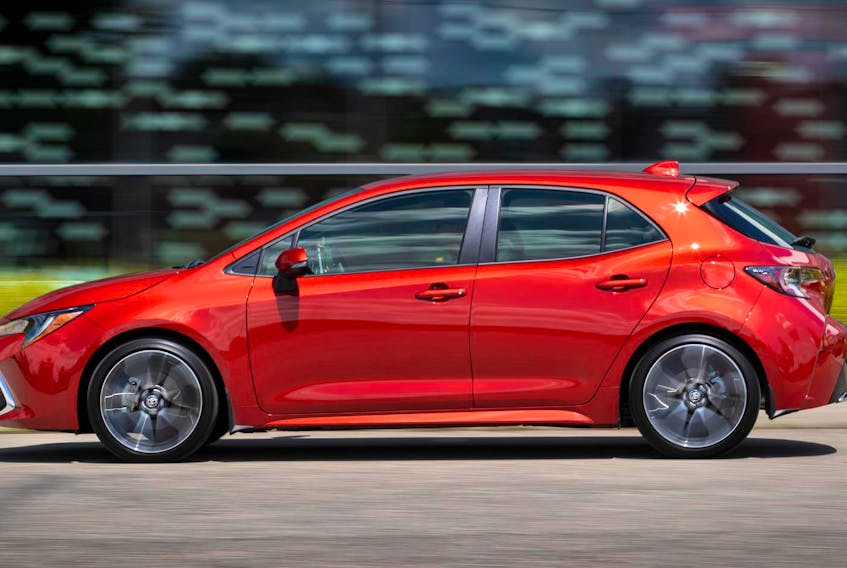Continuously variable transmissions have received many unfavourable comments over the years, mostly because of their sometimes mushy feel, as if the engine were connected to the drive wheels through a rubber band.
While these comments are justifiable, there have been many improvements to CVTs over the years to the point where most of the time they feel more like a conventional transmission but still retain the continuously variable gear ratio benefits of CVT drivetrain.
Now Toyota has made another step forward in CVT technology with the incorporation of a launch gear into the CVT design.
Available on the 2019 Toyota Corolla, the CVTi-S (CVT with intelligence and shift mode) transmission uses a mechanical gear to connect the power from the engine to the road wheels at speeds from start to between 24 and 40 km/h depending on driver power demands.
This gives a responsive feel to the acceleration at low speeds, speeds at which CVT transmissions typically feel the least responsive.
When the Corolla reaches higher speeds, the mechanical gear is shifted out of mesh and then the transmission operates using the belt driven CVT modes. The mechanical gear doesn’t engage again unless the vehicle comes to a complete stop.
Using a mechanical gear to start the vehicle moving enables more than just responsive launches.
Because of the mechanical gear advantage at low speeds, the CVT’s conical pulleys and belt are under less stress and they can be made smaller.
The segmented steel belt that connects the two pulleys can also have a narrower angle and these design changes reduce drivetrain parasitic drag.
The smaller and lighter components let the belt and pulley gear changes shift about 20 per cent faster, reducing acceleration lag when the driver requests more speed.
The pulleys have also been designed to operate at higher ratios, giving the transmission a wider overall gear range that improves fuel economy.
Toyota says the new transmission design is six per cent more efficient than last year’s model.
When the transmission is operating in CVT mode, the transmission computer will continuously vary the width of the pulleys (which changes the gear ratios) when the car is driving under low load conditions such as cruising, coasting or low speed driving.
In theory, with the right program in the transmission computer, a CVT can always be in a perfect gear for any driving condition and that happens under low load conditions to maximize fuel economy.
For most CVT operation it is the computer programming that has improved over the years to give them a better shift feel and driving response but Toyota’s launch gear design improves this even further.
When the driver demands more performance such as passing, using the paddle shifter or full throttle acceleration, the CVT program can switch to a 10-speed sequential shift operation.
In this mode, the computer moves the pulley ratios through 10 pre-programmed steps that make the operation feel like a conventional transmission shifting through 10 gear changes.
This feel is more pleasing to drivers but not quite as efficient as operating is pure CVT mode.
In the 2019 Corolla Hatchback, Toyota has coupled this new CVT to their new 2.0-litre, four-cylinder engine. Physically smaller, lighter and quieter than its 1.8-litre predecessor, the new 2.0-litre engine includes a long list of improvements.
Notable changes include dual variable valve timing that now uses an electric motor instead of oil pressure on the intake camshaft to vary valve timing, and dual fuel injection systems that use a combination of port and direct injection for maximum economy and performance.
In either the Corolla sedan or hatchback, the new CVT transmission is another step forward in fuel economy, performance and driver satisfaction.
Jim Kerr is a master automobile mechanic and teaches automotive technology.









